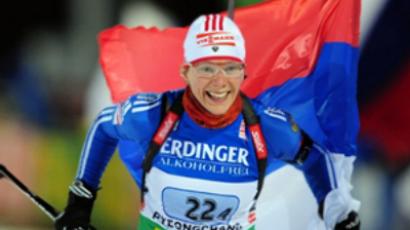Dog sledding wags its tail in Siberia
A small group of enthusiasts is trying to revive the tradition of dog sledding in the ever-green forests of Siberia, where sometimes husky sledding is the best way to get around.
The Khanty-Mansi autonomous region in Western Siberia provides ideal conditions for biathlon – cross-country skiing and shooting – and is the centre of the sport in Russia.
However, the freezing temperatures and plentiful supply of snow in the Siberian taiga make the area popular not only with skiers, but with other adventure-seekers and extreme tourists.
Minaskhat Aupov owns a kennel of Huskies. His team has already participated in national championships.
“As I child I always loved Jack London books and in 2006 we had a guest from France. The guy came on a dog sled. He was on a trip from Baikal to Moscow and I was so impressed with his trip it inspired me to buy husky dogs and join the sport,” he said.
While Siberian husky dogs can withstand temperatures of -60C, the furless rider struggles in -20C, requiring layer upon layer of clothing, which can restrict movement.
The owner of the dogs says the friendly creatures argue over who gets to run the sled. However, each one gets to race as Aupov’s place is always full of tourists – both regulars and newcomers.
Journalist with the London Times, Tony Halpin, came to the Khanty-Mansi region because he “wanted to see what possibilities there were for people to do extreme tourism”.
“It seemed to me like an exciting project to see how husky dogs are bread and how they live out here and how they work,” he said.
Aside from training, the dogs require a lot of care and food. Aupov can just about provide for the dogs.
Although the region’s administration appreciates his enthusiasm to bring the tradition back to the region, it doesn’t provide any support.
“We’re the only ones in the region so far. To develop and popularise the sport we need financial support. We asked for help from local authorities but had no response so far,” he said.
Another sport that became a tradition in Khanty-Masysk is biathlon. Unlike dog sledding, it is widely supported by the government as this is where most of Russia’s Olympic champions began their careers.
A biathlon centre was founded here in the 1980’s and made Khanty-Masysk Russia’s Biathlon capital.
Levesev Sergei, a biathlon trainer says:
“Every year there are either Olympic champions or world biathlon champions who started their careers in our school. Children come here at the age of nine and leave for the big sport after about 10 years of training.”
Perhaps winter sportsmen and women who train in extreme Siberian temperatures have an advantage over their fair-weather competitors.
If dog sledding ever becomes an Olympic sport, there’s a chance the Khanty-Masny region will play an important role in the Russian national team coming out top dog.













